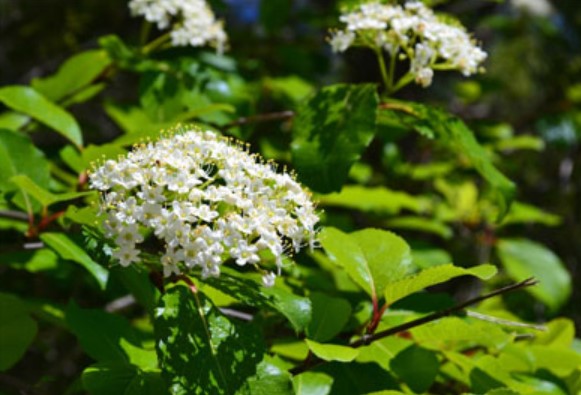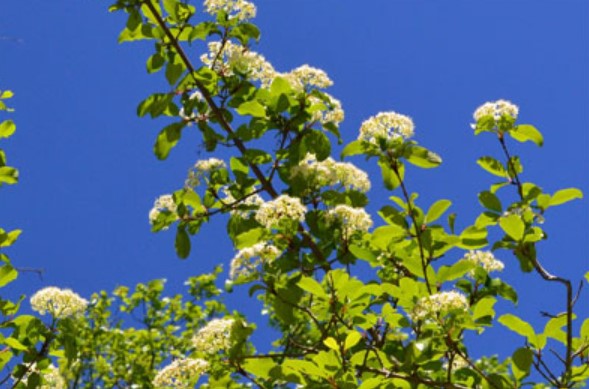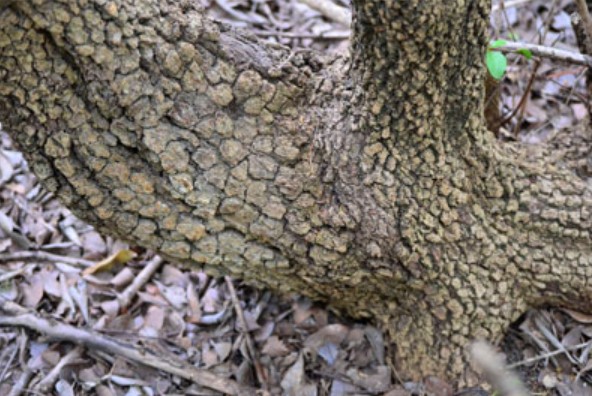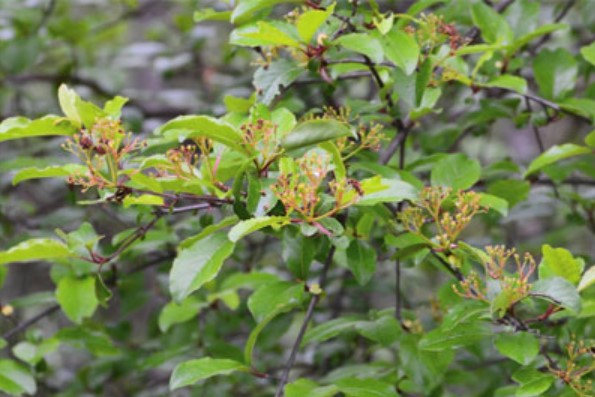Tree Species Profiles: Top Rated Ornamental Trees, Rusty Blackhaw (Viburnum rufidulum)


Published April 25, 2014, By STEVE HOUSER
Rusty Blackhaw, Viburnum rufidulum, is a top-rated ornamental tree that is much more attractive than its name would imply. Hearing the name for the first time, most people ask, “A rusty black what?” I suppose they think that anything rusty and black could be creepy or possibly even give you the cooties. However, Rusty Blackhaw is an attractive tree that is underutilized in our urban landscapes.
Rusty Blackhaw is native to Central and East Texas and found in a few isolated pockets in the western part of the state. It will tolerate a wide variety of soils as long as the site is well drained. Rusty Blackhaw is moderate to high in drought tolerance, making it a good ornamental tree selection for water-conscious gardens.

With full-sun exposure, Rusty Blackhaw will produce an abundance of flowers. At home in alkaline soils, it can fill the same gardening niche in Central and West Texas that Dogwood does in East Texas.
It has lustrous, bright green, glossy leaves that rival those of most broadleaf evergreens. However, they turn pink to dark purple in the fall, before they drop to reveal the tree’s true deciduous nature. The backsides of the leaves are paler in color and contain small hairs that provide a “rusty” look. As with all viburnums, the leaf arrangement is opposite. The bark is light brown to grey and smooth when young, changing to a blocky or checked bark pattern as the plant matures.

As Rusty Blackhaws mature, the bark takes on a unique blocked or checked look, adding another level of interest in the landscape.
A Rusty Blackhaw found growing in thin soils above shallow rock and where annual rainfall is meager may be only 15 feet tall at maturity. The same tree growing in deeper more fertile soil with more rainfall can grow to 30 feet tall, especially if it is benefiting from exposure to full sun. Rusty Blackhaw is one of the few ornamental trees that will tolerate a great deal of shade, but dense shade will result in fewer leaves, flowers, and fruit. In shaded moist areas, it can be a lone single tree. However, in the shallow and rocky soils in its native setting, it may grow as a thicket — many trees growing close together in a “group hug.” In urban landscapes, Rusty Blackhaws develop the most attractive form when planted in full sun.

Even after the flowers fade, Rusty Blackhaw is easily identifiable by its glossy green leaves and opposite leaf and stem growth habits.
With enough sun, they will produce abundant clusters of small white flowers in the spring, after the leaves emerge. The flowers have a mild fragrance. The fruit (also called a drupe) is berry-like and green as it emerges, turning to red and then to blue and black later in the season. The ripe fruit hangs in clusters and is a favorite of wildlife. Said to taste like raisins, the fruit can be eaten raw, cooked, or made into jelly. (I was just kidding about the cooties!)
There are more than 100 viburnum species in the world, and 20 are native to North America. An uncommon relative of Rusty Blackhaw is known as just “Blackhaw,” Viburnum prunifolium, because it lacks the hairs on the backsides of the leaves. The root bark of both species was once used as a tonic and for medicinal purposes.
Rusty Blackhaw is a true Texas native that shows its colors by being rugged and tough — but still willing to show a soft side and a few flowers.
To continue reading the Top Rated Trees article series, please click here.

